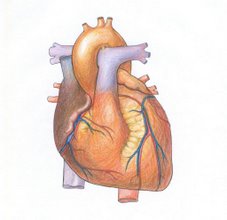Chikungunya
(This article is meant for education purpose only)
Chikungunya fever is a viral illness that is spread by the bite of infected mosquitoes. The disease resembles dengue fever, it is rarely life threatening. The name, chickungunya, comes from Swahili for stooped walk. This shows the condition of the patient suffering from the disease where joint pain is the major symptom. The disease is mainly seen in Africa, South-East Asia, southern India and Pakistan. It occurs principally during the rainy season.
Spread of Chikungunya
Chikungunya is spread by the bite of an Aedes mosquito, mainly Aedes aegypti. Humans are the major source of chikungunya virus for mosquitoes. The mosquito usually transmits the disease by biting an infected person and then biting someone else. An infected person cannot spread the infection directly to other persons i.e. it is not a contagious disease. Aedes aegypti mosquitoes bite mostly ujduring the daytime.
Symptoms
Symptoms are similar to those of dengue fever. The time between the bite of a mosquito carrying chikungunya virus and the start of symptoms ranges from 1 to 12 days.
Chikungunya is a debilitating illness characterized by sudden onset of:
- Severe headache
- High fever, which can go up to 104 degree Fahrenheit
- Joint pain (arthritis) is the most common feature of the disease, especially joints of hand and ankle. The joints of extremities may become swollen and painful to touch.
- Chills
- Rash
- Fatigue
- Nausea and vomiting
- Muscle pain
- The normal symptoms persist usually up to 3 days but in a few cases, they may be up to 2 weeks.
- Platelets (a type of blood cells) count may decrease till the disease persists.
- Neutropenia, a condition in which nuetrophil (white blood cells that help fight infection) count decreases can occur at times.
Sometimes, the infection causes no symptoms, especially in children.
Diagnosis
Chikungunya fever occurs mostly in epidemic. Usually the diagnosis is based on symptoms.
Chikungunya is diagnosed by blood tests (ELISA).
Since the clinical appearance of both chikungunya and dengue are similar, laboratory confirmation is important especially in areas where dengue is present.
Treatment
There is no specific antiviral treatment or vaccine available for chikungunya. Only symptomatic treatment to reduce joint pain, muscle pain and fever is given.
Non-steroidal anti-inflammatory drugs may help to ease symptoms of aching and joint pain.
Analgesics help relieve pain and fever. Analgesic like aspirin should be avoided.
The patients should take adequate rest and drink plenty of fluids.
Chikungunya fever is not a life threatening infection.
Infected persons should be isolated from mosquitoes to avoid transmission of infection to other people.
Prevention and control
Prevention depends upon taking steps to avoid mosquito bites and elimination of mosquito breeding sites.
To avoid mosquito bites: Wear full sleeve clothes and long dresses to cover the limbs. Use mosquito coils, repellents and electric vapor mats especially during the daytime. Use mosquito nets – to protect babies, old people and others, who may rest during the day. Mosquitoes become infected when they bite people who are sick with chikungunya. Mosquito nets and mosquito coils will prevent mosquitoes from biting sick people.
To prevent mosquito breeding: Drain water from coolers, tanks, barrels, drums and buckets, etc. Empty coolers when not in use. Remove from the house all objects, which have water collected in them. Do not allow storage of water for more than a week. Emptying and drying the water containers once in a week can achieve this.
skip to main |
skip to sidebar
Articles Read :

Home :: Shopping :: KitchenTaste :: Computer :: Sci - Tech :: Health :: Travel :: the World :: MalayalaM :: Spirituality :: Fun & Jokes :: Education :: Pet Animals :: Search
Articles Read :
Articles
Blog Archive
